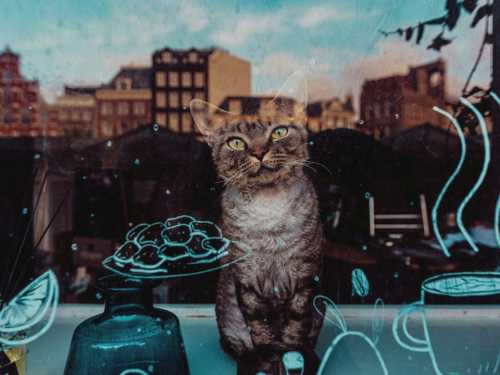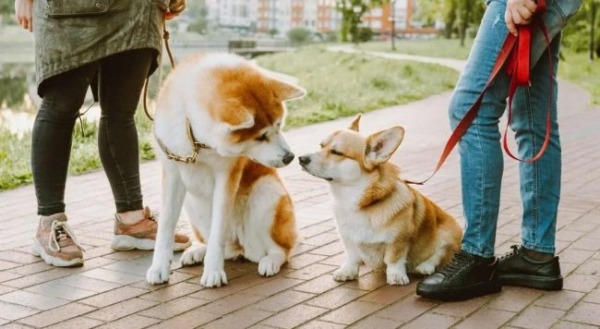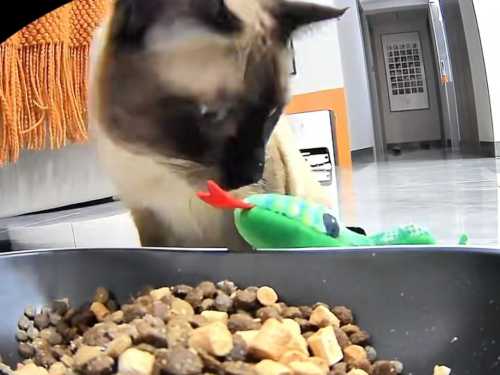
“And if no one buys it from you, what will happen to it? Where do you dispose of the animals that you haven't sold?” – these are questions that visitors of all ages periodically ask at the pet store. It's time to give them an honest, albeit not always pleasant, answer.
Most animals sell pretty quickly.
Some people, seeing a cage with, for example, Dzungarian hamsters over and over again, think that they are the same rodents, since they all look alike. But in fact, the population in the cage is constantly being updated.
The same goes for other popular species. Most animals and birds—budgies, guinea pigs, popular fish—sell out within two to three weeks of being put up for sale. This is optimal for both the store and the animals themselves—so they don't sit in cages and accumulate stress from being kept in close quarters and constantly being watched by visitors.
Better less than more
Any responsible pet store is demand-oriented. Live goods cannot lie in a utility room or warehouse, so they are never ordered “in reserve”. On the contrary, animals are imported in such small batches that buyers sometimes have to wait for a new arrival. And some pet stores import animals, especially exotic ones, only for a specific order. This avoids the appearance of excess animals.
What animals sit in cages?
This happens, and it is these animals that fall into the so-called “unfitness.” Usually these are two categories: overgrown and animals with external defects.
Overgrowth is most common among rabbits and rats, as they grow very quickly. Almost all buyers want a tiny baby rabbit or rat, and there is almost no demand for large, adult animals. This problem rarely affects hamsters and parrots, since their age is more difficult to determine visually. This never applies to fish: on the contrary, the larger the fish grows, the more expensive and valuable it becomes.
Defective animals. Sometimes an animal has something wrong with an eye, ear, or paw, either from birth or as a result of an injury. Most buyers are looking for the perfect pet and avoid such animals, fearing possible health problems and additional veterinary costs.
What really happens to animals that no one buys
This is where the hard part begins, as there are several scenarios, from happy to very cruel. The idealized picture that some stores paint is unfortunately far from the reality of the industry as a whole.
1. Return to supplier. Some animals are sometimes taken back by suppliers. But there is an important nuance here: this is only possible if the store cooperates with small local scouts. They can use adult animals for further breeding or find them a home. However, most animals come from large “animal farms”, where they are bred on an industrial scale. Such farms never accept goods back – it is simply unprofitable for them.
2. Free in good hands. This is a common practice, especially for small, “family” stores, where it is more profitable to give away an animal than to keep it indefinitely. Such “unhealthy” animals are picked up by visitors who see the ads. Previously, they could be given to wildlife areas in schools or kindergartens, but today this practice is increasingly criticized, because the conditions there are rarely proper, and the care is qualified. Most often, they are taken away by the pet store employees themselves. For them, age or problems with an eye/paw are not an obstacle, because the workers manage to get attached to them. In large chain stores, where the “conveyor” approach prevails, this scenario occurs less often.
3. The cruelest reality: selling for food. This is something that is usually kept quiet. For “unhealthy” rodents (hamsters, rats, mice), there is another, most common way. If they are not bought as pets, they are sold as “food objects” to owners of predatory reptiles (snakes, monitor lizards) or birds of prey. For a pet store, this is a way to get rid of “unsold goods” and get at least some profit. This is a standard and, unfortunately, an inseparable part of the pet business.
4. Abandonment. There is another non-public scenario – negligence. In irresponsible stores, a sick or “illiquid” animal can simply be left in a utility room without proper care, condemning it to a slow death from disease or starvation. This is not an official policy, but it happens due to indifference and the cruel realities of the “conveyor” business.
5. Mascot animal. In very rare cases, when an animal cannot be sold or adopted, it may remain on the store's balance sheet forever. It is allocated a separate cage, given a name, and becomes a common pet for all employees. It is looked after, interacted with, and regularly let out to stretch out. But this is more of an exception than a rule.
What about euthanasia or “releasing”?
It is overly optimistic to think that animals are never put to sleep. In small, ethical shops, where caring people work, this is indeed avoided at all costs. However, on an industry-wide scale, especially in large chains, a sick animal whose treatment is economically unprofitable (veterinary services can cost tens of times more than the cost of the rodent itself) may be put to sleep. This is business, and its cruel laws apply here.
As for “releasing them into the wild” – no responsible employee would do that. Ornamental animals raised in captivity are completely unadapted to life in our wild nature. Such an act for them is certain death from hunger, cold, or predators.
I hope this answer has given you a more complete and honest picture of the fate of the “living commodity.” And maybe next time, when choosing a pet, you will look not only at the smallest and most active, but also at the one who sits quietly in the corner and waits for his chance.





